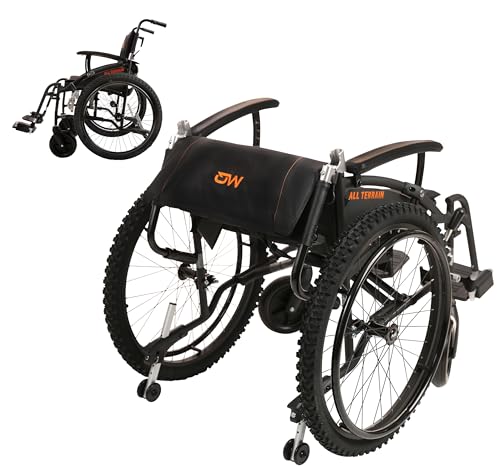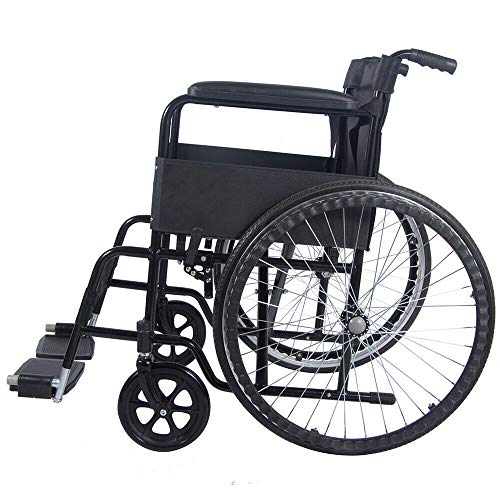5 Killer Quora Answers To How To Self Propel A Wheelchair
페이지 정보
작성자 Felicitas 댓글 0건 조회 3회 작성일 24-11-22 11:16본문
 how to self propel a wheelchair (just click images.google.bg) to Self Propeller a Wheelchair
how to self propel a wheelchair (just click images.google.bg) to Self Propeller a Wheelchair self propelled wheelchair with suspension-propelling wheelchairs can open up a new world of independence. However, it requires the right body posture and practice to accomplish this.
self propelled wheelchair with suspension-propelling wheelchairs can open up a new world of independence. However, it requires the right body posture and practice to accomplish this.A proper body position requires an exact grip and pushing technique. This article will focus on these skills, as well as other important aspects of wheelchair propulsion.
Hand Positioning
Properly pushing a wheelchair the hands is an important aspect of self-propulsion. It is recommended to begin with precision and work your way up to speed. It's also an excellent idea to sit down while pushing to improve stability and comfort, especially for those who have upper body restrictions. The hands should be set to match the wheel's speed and push evenly both of them, without wrapping the thumbs around the rims of the hand. This is a common omission, as it reduces efficiency and increases the force required for each stroke.
To avoid contact with the rear wheel, the path of recovery for the hands should be in an "equilateral" pendular pattern beneath the hand-rims. This helps reduce shoulder strain and also keeping the amount of strokes and length of each stroke at an absolute minimum.
For surfaces that are more difficult to maneuver, it is sometimes recommended that wheelchair users make long strokes and a full recovery (like the hand's position on the clock). This helps to minimize shoulder injury due to repeated motion, but can increase the load on shoulders with each cycle.
Using the same position for both propelling and braking can also help minimize shoulder injuries. If the wheelchair user can keep a steady rhythm during both movements it will be much easier to manage the forces that are applied and adjust for variations in the terrain.
On slick or muddy surfaces it is necessary to lean a bit forward while propelling to prevent the wheels from sinking in the ground and tipping. You should test different trunk leans to find the right balance between too much and too little lean. Regular practice will boost your confidence and ability. Wheelchair propulsion is an essential skill for those who suffer from mobility issues. It can open up a whole world of independence. With the proper technique and the right equipment, as well as some education, anyone can learn to drive their own manual wheelchair easily! This entry was filed under News and tagged wheelchair.
Foot Positioning
The foot position of the user is extremely crucial to ensure stability. It is not ideal to place the feet of a wheelchair too far apart as it makes it difficult to self-propel. Sometimes, it is necessary for the wheelchair to have this configuration to maneuver over difficult terrain. For instance, if the client is going down an extremely steep ramp or even across some of our fantastic National Parks or beaches, the wheelchair needs to have wheels that can move up and over them in a way that allows the user to move themselves forwards. This is accomplished by having the front wheels placed as shown in the photograph below.
The client can push the wheels together by simply grasping the rims. This requires a lot of upper body strength and is very slow to do but it is doable and it allows clients who might not be able to go up or down hills to accomplish this.
It is also essential for the client to be capable of doing wheelies, so that they can get over obstacles, such as curbs or other people. In this situation the client should place his left foot on top the right and then lift it over the obstruction. The client will then lift their right leg and push with their left hand to get over the obstruction. This is referred to as a crab walk and it can be an effective way to move a wheelchair across some of our more difficult terrain.
They are a great choice for injured or disabled people who wish to move around without needing help. They are lightweight self propelled wheelchairs, compact and foldable so they require less space in the home than other mobility aids. With the help of accessories such as the E-Motion, they can be transformed into powerchairs, giving the user freedom to use their chair and the benefit of electric assistance when needed.
Braking
The ability to self propel a wheelchair is a crucial ability for those with mobility challenges. They can navigate many environments and terrains on their own. It also helps them build strength in their upper arms and shoulders.
The user should press down on one side of the hand rim, then pull up the other side to push the wheelchair forward. This push-pull action creates momentum that moves the wheelchair in the direction desired by the user. The speed at which the wheelchair is moved can be adjusted by applying more or less pressure to the rims or by using hand brakes if they are fitted with them.
The ideal push cycle should last at least three hours. This decreases the amount of time the shoulder is being strained which reduces the chance of injury due to repetitive strain. The size and width of the back wheels can influence the speed at which a wheelchair is moved. Larger wheels require more force to move, while smaller wheels are easier to maneuver. Wheelchairs may also be designed to have camber, which aligns the rear wheels with biomechanics, and increases the stability of the lateral side.
Wheelchair users who want to improve their techniques for propelling should practice in a safe location, like a parking lot or a hall that is empty. The goal should be to build long slow strokes, allowing the wheelchair to glide between strokes.
It is also essential for the user to practice maneuvering while moving, such as weaving around objects or making turns. One method to do this is to weave through cones, and then slowly transitioning into straight-line movement. The more practice a person does the more easy it will be for them to master this.
Self-propelled wheelchairs can be an ideal option to help people remain active and do things they enjoy. They can offer autonomy and are a great tool for socializing, going to the cinema or even travel. By learning to use a wheelchair properly, you can continue or gain back your independence and get to the place you want to be.
Stability
A wheelchair user who self propels their chair can be able to independently travel wherever they wish to go without having to rely on others. It requires the use of a lot of strength in the upper part of the body, however it is possible to push the wheel on flat surfaces or even up small hills. This is the reason the majority of wheelchair users choose to use an attendant controlled (also called an attendant propelled) chair, such as the Action3 NG or ErgoLite 2 and are pushed by an attendant.
Grasping the hand rims to move in a manual wheelchair is among the most important aspects to master to ensure optimal performance and ease. We often find that clients who are using this type of chair have their hand rims too far forward, which means they are forced to reach further backward with their arms. This is not efficient biomechanically and can lead to strain on the shoulders over time.
The ideal hand-propulsion technique is a semi-circular movement where the client is alternating between the push phase and the recovery phase. The push phase requires the user to push down on the casters which is accomplished with a lot of small strokes. This push pattern can help to strengthen the shoulder retractor muscles and maintain a healthy range of motion.
As the recovery phase begins the client will move their hands back and forth along the wheel's rims until they are in contact with the casters. This allows for longer strokes, and reduces friction during the recovery phase. Some wheelchair users move their hands along the rims of the wheels in a smooth arc but this technique is not as efficient. It could also cause extra wear on the wheels.
The position of the rear wheels to allow self-propulsion is an additional aspect of stability. If the wheel is positioned too far in the rear the wheelchair could easily slide. It isn't easy to maneuver around obstacles and is not recommended for shoulder injuries. In order to decide which wheel is the best self-propelled wheelchair for a particular client it is necessary to evaluate their strength, range-of-motion, muscle tone, orthopedic status and other variables during the seat assessment.
댓글목록
등록된 댓글이 없습니다.